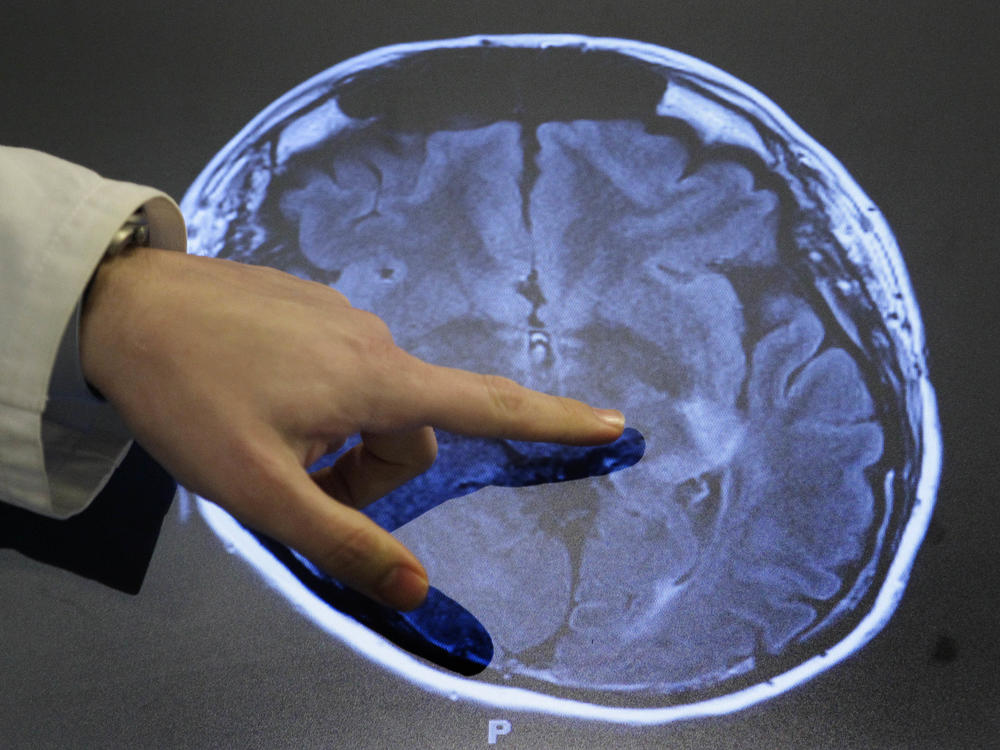Section Branding
Header Content
Stroke rates are increasing among young people. Here's what you need to know
Primary Content
Over the weekend, the model Hailey Bieber told her Instagram followers that she experienced stroke-like symptoms while at breakfast with her husband Thursday morning.
Doctors found a small clot in her brain, she said, which caused "a small lack of oxygen." Bieber said on Instagram that her body passed the clot on its own, and she recovered within a few hours.
Though Bieber recovered in her case, blood clots in the brain can lead to ischemic strokes, which make up a majority of all strokes. And among young people, stroke rates are on the rise. Here's what you need to know.
There are three main stroke types
Ischemic strokes happen when blood flow is blocked through an artery that delivers blood to the brain. These strokes account for the vast majority of all strokes, according to the Centers for Disease Control and Prevention.
Transient ischemic attacks, which are sometimes called "mini-strokes," are different than ischemic strokes because these strokes block blood flow from the brain for a short period of time only — often, as short as five minutes. Like ischemic strokes, these strokes are also often caused by blood clots.
Although these are short-lived, transient ischemic attacks warn of future strokes and are medical emergencies. More than a third of people who experience these do not receive treatment and have a major stroke within a year, according to the CDC.
A hemorrhagic stroke is another type of stroke, which occurs when an artery in the brain leaks blood or ruptures. The leaked blood puts pressure on brain cells and damages them. High blood pressure and aneurysms can cause these strokes, the CDC says.
More young people are having strokes
Over the past 30 years, stroke incidence among adults 49 and younger has continued to increase in Southern states and the Midwest, the American Heart Association said in February. Rates have declined for those older than 75.
"We hope that targeted public health interventions will be considered for younger populations, particularly in the regions where stroke incidence is increasing," said Audrey C. Leasure, lead study author and a medical student at Yale University School of Medicine. "When we think about ways to improve these stroke numbers, we need to develop tailored interventions."
The findings stemmed from the Global Burden of Disease 2019 study, which is a peer-reviewed, large-scale assessment of global health trends. In 2019, there were 460,000 strokes — two-thirds of which were ischemic.
On average, someone died of stroke every 3 minutes and 30 seconds in 2016, according to the American Heart Association. Stroke risk factors, such as high blood pressure and Type 2 diabetes, are becoming more common in younger and middle-aged people.
Other risk factors include heart disease, diabetes, obesity, smoking and high cholesterol, according to Johns Hopkins University.
Stroke risk increases with age, and African Americans are at a higher risk for death and disability from stroke than white people, according to Johns Hopkins.
Know the signs
Stroke symptoms can be summed in an acronym: BE FAST, according to the Cleveland Clinic.
Neurologist Blake Buletko recommends being familiar with the signs, because you should "never assume you're exempt from having a stroke," he says.
- Balance: Watch out for a sudden loss of balance or coordination.
- Eyes: Note any vision loss in one or both eyes, or double vision.
- Face: Watch for drooping on one side of the face.
- Arms: Note any sudden weakness in an arm or leg.
- Speech: Note any slurred speech or difficulty speaking or understanding words
- Time: Call 911 quickly if someone is experiencing any of these symptoms.
Copyright 2022 NPR. To see more, visit https://www.npr.org.

